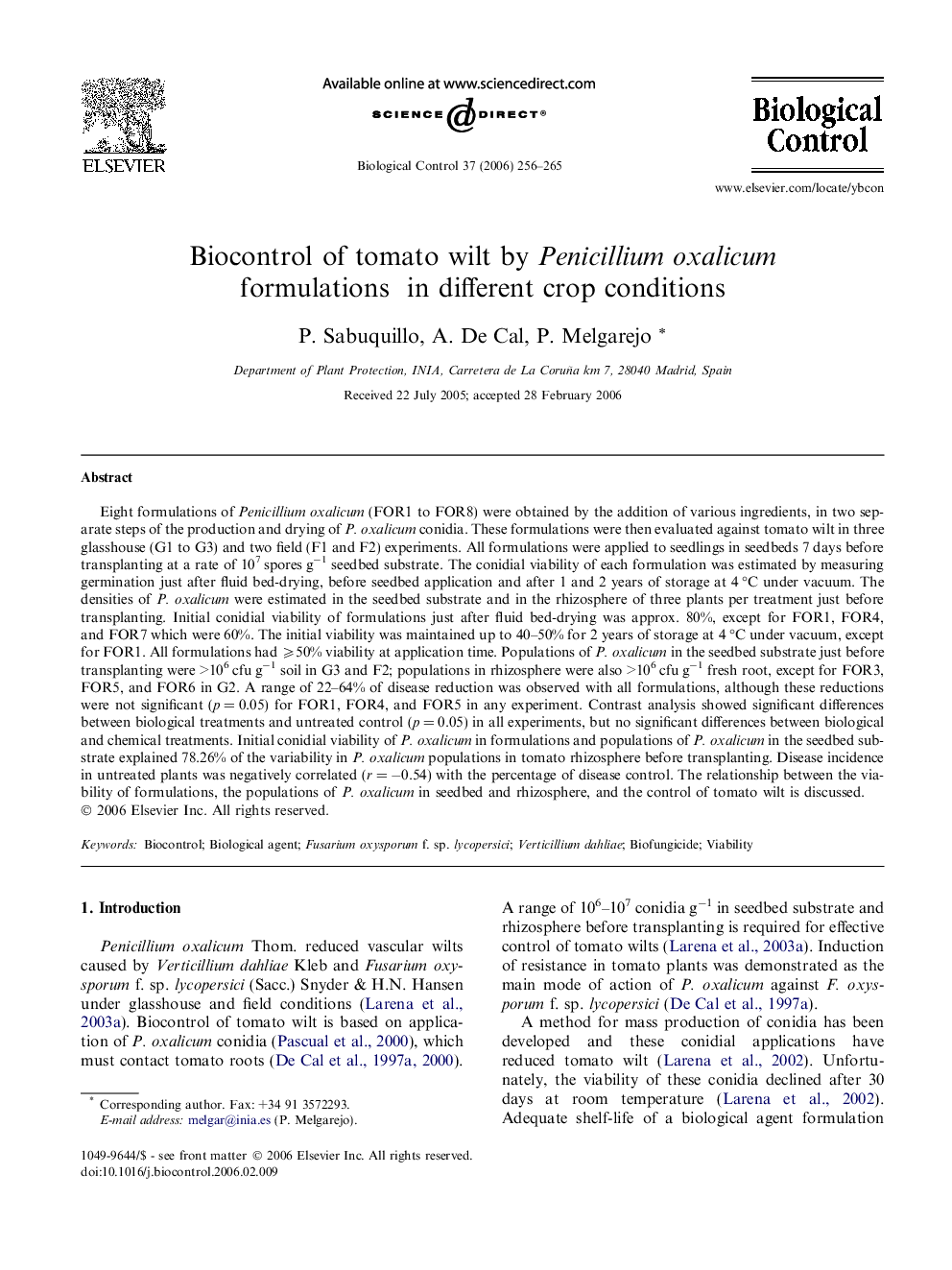| کد مقاله | کد نشریه | سال انتشار | مقاله انگلیسی | نسخه تمام متن |
|---|---|---|---|---|
| 4505337 | 1321139 | 2006 | 10 صفحه PDF | دانلود رایگان |

Eight formulations of Penicillium oxalicum (FOR1 to FOR8) were obtained by the addition of various ingredients, in two separate steps of the production and drying of P. oxalicum conidia. These formulations were then evaluated against tomato wilt in three glasshouse (G1 to G3) and two field (F1 and F2) experiments. All formulations were applied to seedlings in seedbeds 7 days before transplanting at a rate of 107 spores g−1 seedbed substrate. The conidial viability of each formulation was estimated by measuring germination just after fluid bed-drying, before seedbed application and after 1 and 2 years of storage at 4 °C under vacuum. The densities of P. oxalicum were estimated in the seedbed substrate and in the rhizosphere of three plants per treatment just before transplanting. Initial conidial viability of formulations just after fluid bed-drying was approx. 80%, except for FOR1, FOR4, and FOR7 which were 60%. The initial viability was maintained up to 40–50% for 2 years of storage at 4 °C under vacuum, except for FOR1. All formulations had ⩾50% viability at application time. Populations of P. oxalicum in the seedbed substrate just before transplanting were >106 cfu g−1 soil in G3 and F2; populations in rhizosphere were also >106 cfu g−1 fresh root, except for FOR3, FOR5, and FOR6 in G2. A range of 22–64% of disease reduction was observed with all formulations, although these reductions were not significant (p = 0.05) for FOR1, FOR4, and FOR5 in any experiment. Contrast analysis showed significant differences between biological treatments and untreated control (p = 0.05) in all experiments, but no significant differences between biological and chemical treatments. Initial conidial viability of P. oxalicum in formulations and populations of P. oxalicum in the seedbed substrate explained 78.26% of the variability in P. oxalicum populations in tomato rhizosphere before transplanting. Disease incidence in untreated plants was negatively correlated (r = −0.54) with the percentage of disease control. The relationship between the viability of formulations, the populations of P. oxalicum in seedbed and rhizosphere, and the control of tomato wilt is discussed.
Journal: Biological Control - Volume 37, Issue 3, June 2006, Pages 256–265